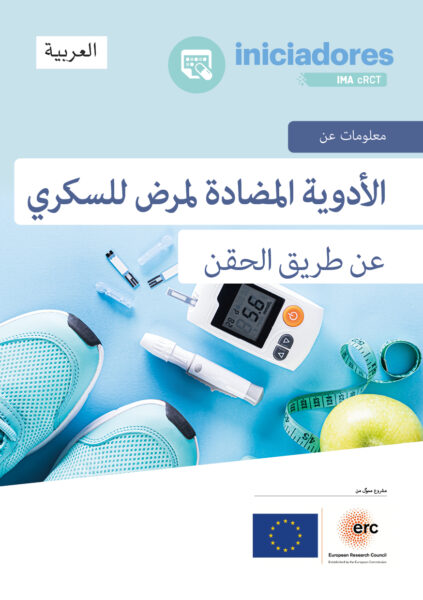Cardiovascular
Risk
What is cardiovascular
risk?
Cardiovascular risk indicates the likelihood of developing a cardiovascular disease in the future. This risk depends on a variety of factors:
High cholesterol
Diabetes
High blood pressure
Fast heart rate
Smoking
Stress
Being overweight or obese
Family history
What are cardiovascular
diseases?
All conditions that affect the heart and the blood vessels are generally defined as cardiovascular diseases. These diseases cause damage to the arteries, and organs, such as the brain, heart, kidneys, and eyes.
Cardiovascular diseases are one of the main causes of morbidity and mortality worldwide, but they can be prevented by following a healthy lifestyle and medicinal treatment.
Cardiovascular diseases in Catalonia
Cardiovascular diseases in Catalonia are the main cause of death in women and the second cause in men.
In the population as a whole, ischaemic heart disease is the disease that has caused the highest number of deaths.
Cardiovascular risk progression
Early detection of cardiovascular diseases, leading a healthy lifestyle and taking the medication recommended by your doctor can prevent an increase in cardiovascular risk.
* The result of the cardiovascular risk calculation indicates the probability that a person will have a cardiovascular accident in the next 11 years, based on their clinical characteristics.
People who have suffered a vascular event (heart, brain and/or peripheral) have a higher risk of suffering another one.
“Doing nothing” is not a good option if you want to reduce the risk of suffering another event.
Complementary measures to reduce
cardiovascular risk
Having a healthy lifestyle is essential to preventing cardiovascular events, but on its own it does not reduce the risk of suffering another new event.
A healthy balanced
diet
Make fruit, vegetables, pulses and wholemeal cereals a priority. Avoid saturated fats and trans fats and follow a low sodium diet.
Regular physical
exercise
At least 30 minutes a day almost every day of the week.
Avoiding tobacco
and alcohol
Reduce the risk of suffering a cardiovascular event.
Sufficient and regular sleep
Reduces and controls stress.
* Benefits backed by science
Do you want to follow a healthy lifestyle?
We can explain how
There are several types of treatment for reducing cardiovascular risk.
The treatment prescribed may vary depending on the phase at which the disease was diagnosed and how it is progressing. Depending on the patient’s characteristics, the doctor may prescribe one or more medicines at once.
Primary prevention
Primary prevention
When the cardiovascular risk is very high, more than 10%, but the patient has not suffered any previous cardiovascular event.
Secondary prevention
Secondary prevention
When they have already suffered a cardiovascular event
What are oral anti-platelet agents?
Platelets are components in the blood that prevent haemorrhages by forming clots. If these clots form in the blood vessels and block them, they are called thrombi. Thrombi can obstruct the circulation of the blood in the blood vessels, which can cause a cardiovascular event.
Anti-platelet agents act on the coagulation of the blood, thus preventing the formation of thrombi. They are very important as a treatment to reduce cardiovascular risk.
What is the treatment
used for?
Anti-platelet treatment reduces cardiovascular mortality by up to 17 % and the risk of suffering a new cardiovascular event by 25%.
Types of treatment
The most commonly used anti-platelet agent treatments are:
CHARACTERISTICS
This is one of the treatments most commonly used to reduce cardiovascular risk. It is used both to prevent a heart attack and to treat it, as well as after coronary revascularisation procedures. In patients who have already suffered a heart attack or stroke, it prevents the emergence of new events.
Acetylsalicylic acid
- Benefits
Reduce the risk of suffering a vascular event
- Adverse effects
- How and when to take it
After fasting at least 1 hour before eating
Common. May affect less than 1 in 10 people
Very Common. May affect more than 1 in 10 people
CHARACTERISTICS
Indicated for patients who have already suffered a cardiovascular event to reduce the likelihood of suffering another. Can be taken alone or in combination with acetylsalicylic acid.
Clopidogrel
- Benefits
Reduce the risk of suffering a vascular event
- Adverse effects
- How and when to take it
With or without food
Common. May affect less than 1 in 10 people
Very Common. May affect more than 1 in 10 people
CHARACTERISTICS
It is prescribed in patients who have previously suffered a cardiovascular event to reduce the risk of recurrence of a myocardial infarction, angina pectoris or a cerebral infarction.
Triflusal
- Benefits
Reduce the risk of suffering a vascular event
- Adverse effects
- How and when to take it
With food
Common. May affect less than 1 in 10 people
Very Common. May affect more than 1 in 10 people
CHARACTERISTICS
It is used to prevent stroke, heart attack, and other cardiovascular events in patients with cardiovascular disease. Can be prescribed alone or in combination with acetylsalicylic acid.
Ticagrelor
- Benefits
Reduce the risk of suffering a vascular event
- Adverse effects
- How and when to take it
With or without food
Common. May affect less than 1 in 10 people
Very Common. May affect more than 1 in 10 people
CHARACTERISTICS
It is used in patients who have had a myocardial infarction or angina pectoris and have been treated with a procedure to open clogged arteries in the heart. It serves to reduce the likelihood of suffering a new cardiovascular event. Can be prescribed alone or in combination with acetylsalicylic acid.
Prasugrel
- Benefits
Reduce the risk of suffering a vascular event
- Adverse effects
- How and when to take it
With or without food
Common. May affect less than 1 in 10 people
Very Common. May affect more than 1 in 10 people
CHARACTERISTICS
It is used as secondary prevention in patients who have already suffered a cardiovascular event.
Ticlopidine
- Benefits
Reduce the risk of suffering a vascular event
- Adverse effects
- How and when to take it
With meals (lunch and dinner)
Common. May affect less than 1 in 10 people
Very Common. May affect more than 1 in 10 people
These are the most commonly used antiplatelet agents, but there are other drugs that can be used. If you have any questions about your treatment you can always consult your doctor, practice nurse or pharmacist.
You can also find reliable information in the Information Centre of the Spanish Agency of Medicines and Medical Devices.
Important information
Generally, the use of antiplatelet agents increases the risk of bleeding (normally slight) and of gastroduodenal ulcers.
However, if your doctor has prescribed it for you, it is because the cardiovascular benefit outweighs the risks. It is very important to use these drugs correctly. Consult your doctor before interrupting the treatment.
Is it compatible with breastfeeding?
The e-lactancia website will tell you if your treatment is compatible with breastfeeding
Monitoring Plan
Clinical practice guidelines recommend a cardiovascular risk check at least once a year for all people with high cholesterol, high blood pressure, or type 2 diabetes mellitus.
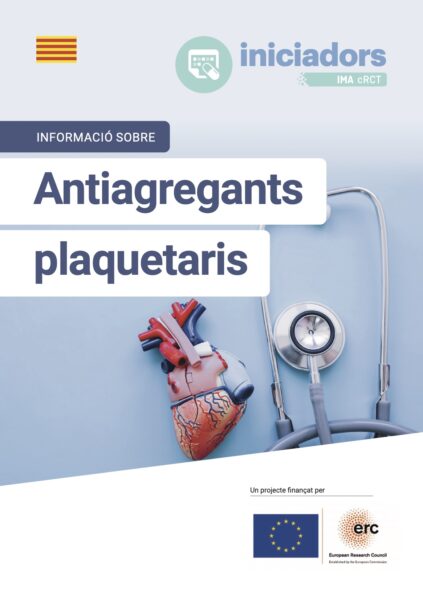
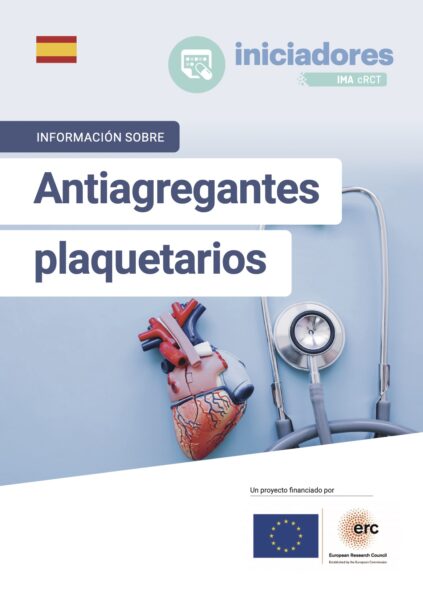

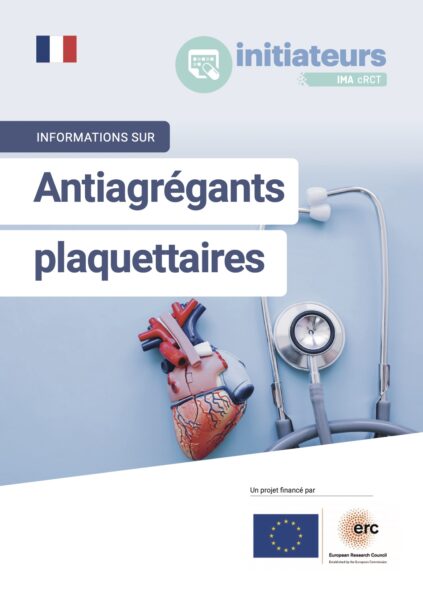

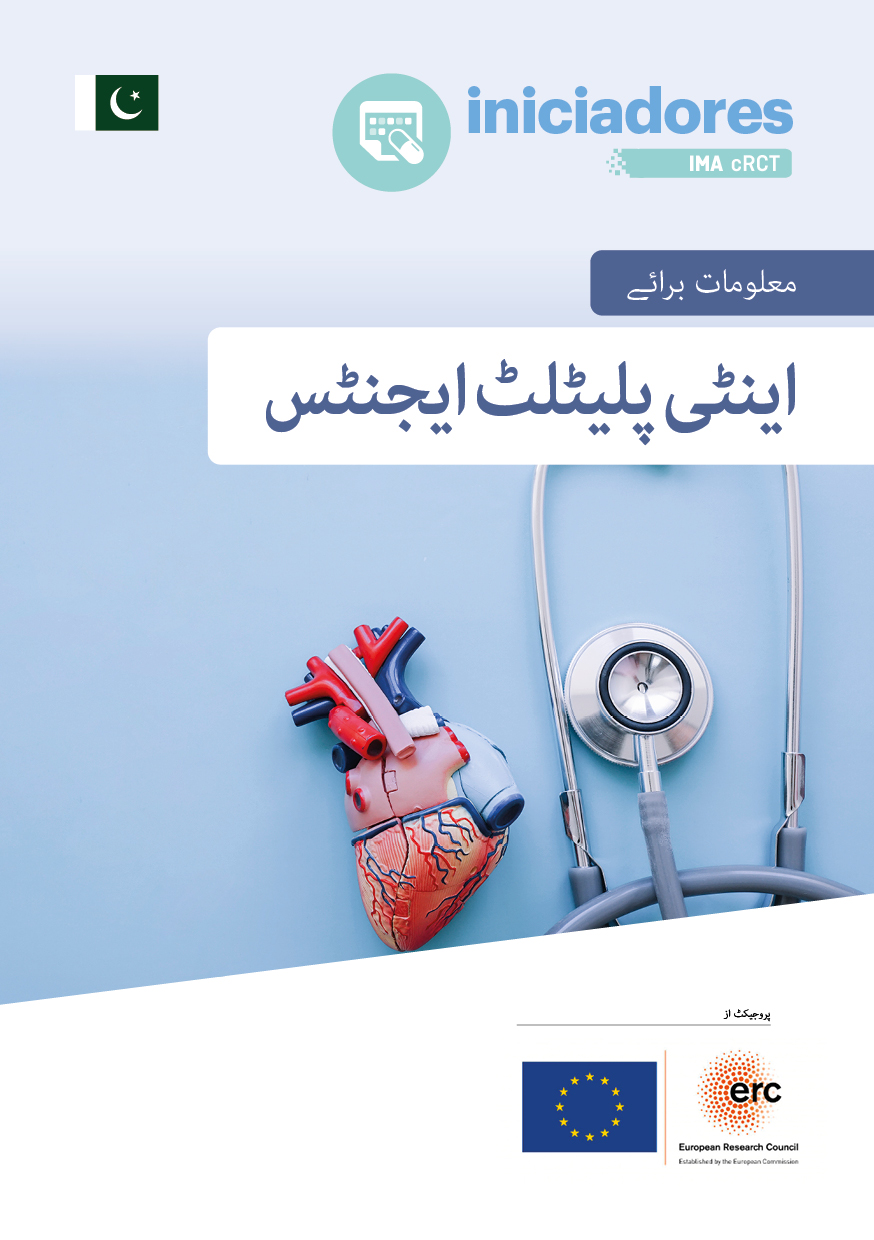
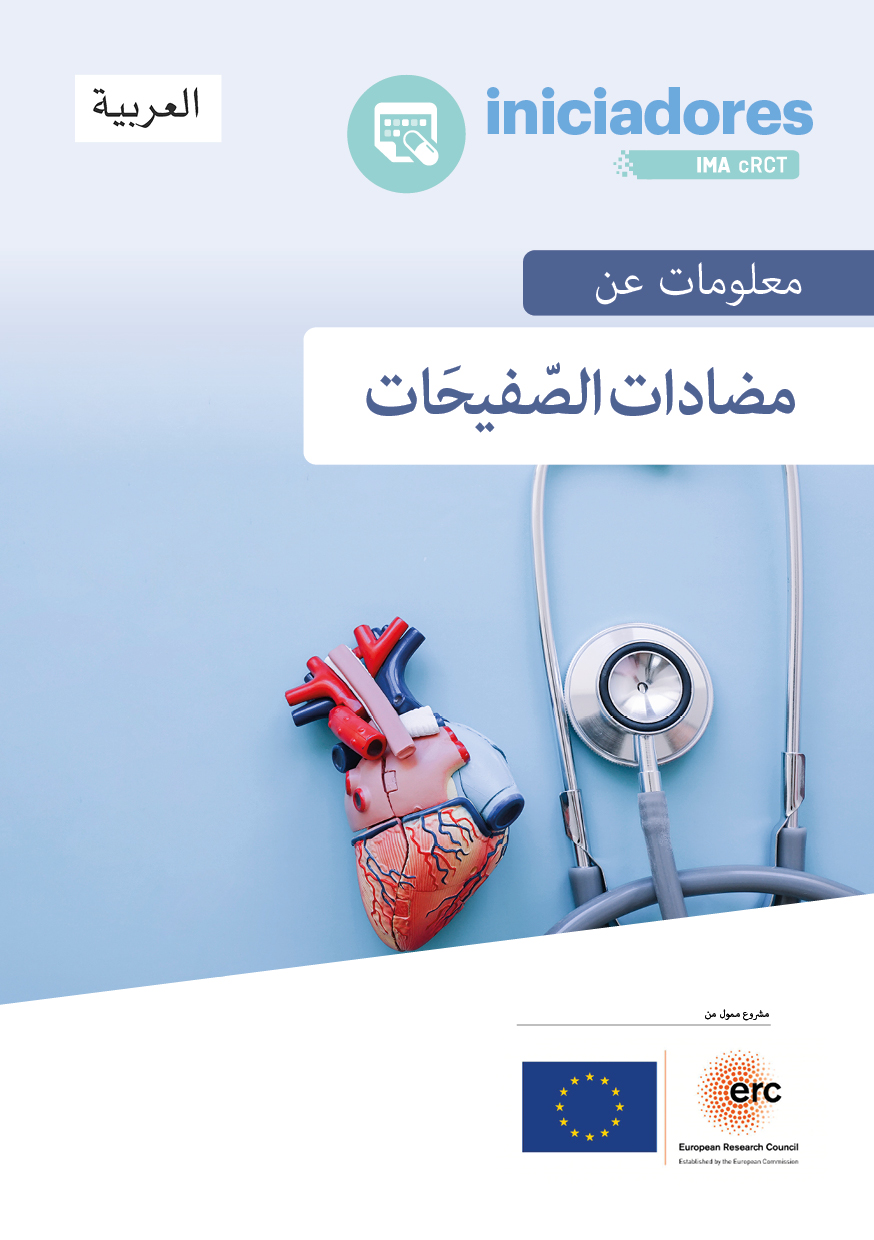
What are Antihypertensive drugs?
Antihypertensive drugs are medicines that work by lowering blood pressure.
Anti-hypertensive drugs have to be taken every day and not only when you think you have “high blood pressure”.
The different treatments
The type of medication prescribed for you will depend on your blood pressure range and health. The most commonly used treatments are:
CHARACTERISTICS
They relax the blood vessels by blocking the formation of the natural substance that puts pressure on them.
Enalapril/Perindopril/Trandolapril/Captopril/Lisinopril/Ramipril
- Acts on the: Blood vessels
- Benefits
Lowers blood pressure
Protects the kidneys
- Adverse effects
- How and when to take it
With or without food
Common. May affect less than 1 in 10 people
Very Common. May affect more than 1 in 10 people
(1)
In the case of Enalapril
CHARACTERISTICS
They relax the blood vessels by blocking the formation of the natural substance that puts pressure on them.
Losartan/Valsartan/Irbesartan/Candesartan
- Acts on the: Blood vessels
- Benefits
Lowers blood pressure
Relaxes the blood vessels
- Adverse effects
- How and when to take it
With or without food
Common. May affect less than 1 in 10 people
Very Common. May affect more than 1 in 10 people
(2)
Depending on the dose
CHARACTERISTICS
They help the kidneys to excrete sodium and liquid from the body. There are different types of diuretics. The treatment recommended by your doctor will depend on your blood pressure and on the presence of other conditions.
Hydrochlorothiazide/Furosemide/Spironolactone
- Acts on the: Kidneys
- Benefits
Lowers blood pressure
Prevents water retention (oedema)
- Adverse effects
- How and when to take it
With food
Preferably in the morning, always at the same time
Common. May affect less than 1 in 10 people
Very Common. May affect more than 1 in 10 people
(2)
Depending on the dose
(3)
In the case of Furosemide and Hydrochlorothiazide
CHARACTERISTICS
They reduce the nerve signals from the blood vessels and also the natural substances that cause them to narrow.
Doxazosin
- Acts on the: Blood vessels
- Benefits
Lowers blood pressure
- Adverse effects
- How and when to take it
With or without food
Common. May affect less than 1 in 10 people
Very Common. May affect more than 1 in 10 people
CHARACTERISTICS
They dilate the blood vessels so that the heart beats less frequently and without making too much effort. This type of medication is usually prescribed as part of combined treatment.
Atenolol/Carvedilol/Metoprolol/Bisoprolol
- Acts on the: Blood vessels
- Benefits
Lowers blood pressure
Prevents heart disease
Relaxes the heart
- Adverse effects
- How and when to take it
With or without food
Common. May affect less than 1 in 10 people
Very Common. May affect more than 1 in 10 people
(2)
Depending on the dose
CHARACTERISTICS
They help to relax the muscles of the blood vessels.
Amlodipine
- Acts on the: Blood vessels
- Benefits
Lowers blood pressure
- Adverse effects
- How and when to take it
With or without food
Common. May affect less than 1 in 10 people
Very Common. May affect more than 1 in 10 people
These are the most commonly used anti-hypertension drugs, but there are other drugs that can be used. If you have any questions about your treatment you can always consult your doctor, practice nurse or pharmacist.
You can also find reliable information in the Medicines Information Centre of the Spanish Agency of Medicines and Medical Devices.
Is it compatible with breastfeeding?
The e-lactancia website will tell you if your treatment is compatible with breastfeeding.
Monitoring Plan
Clinical practice guidelines recommend a blood test for monitoring purposes at least once a year.






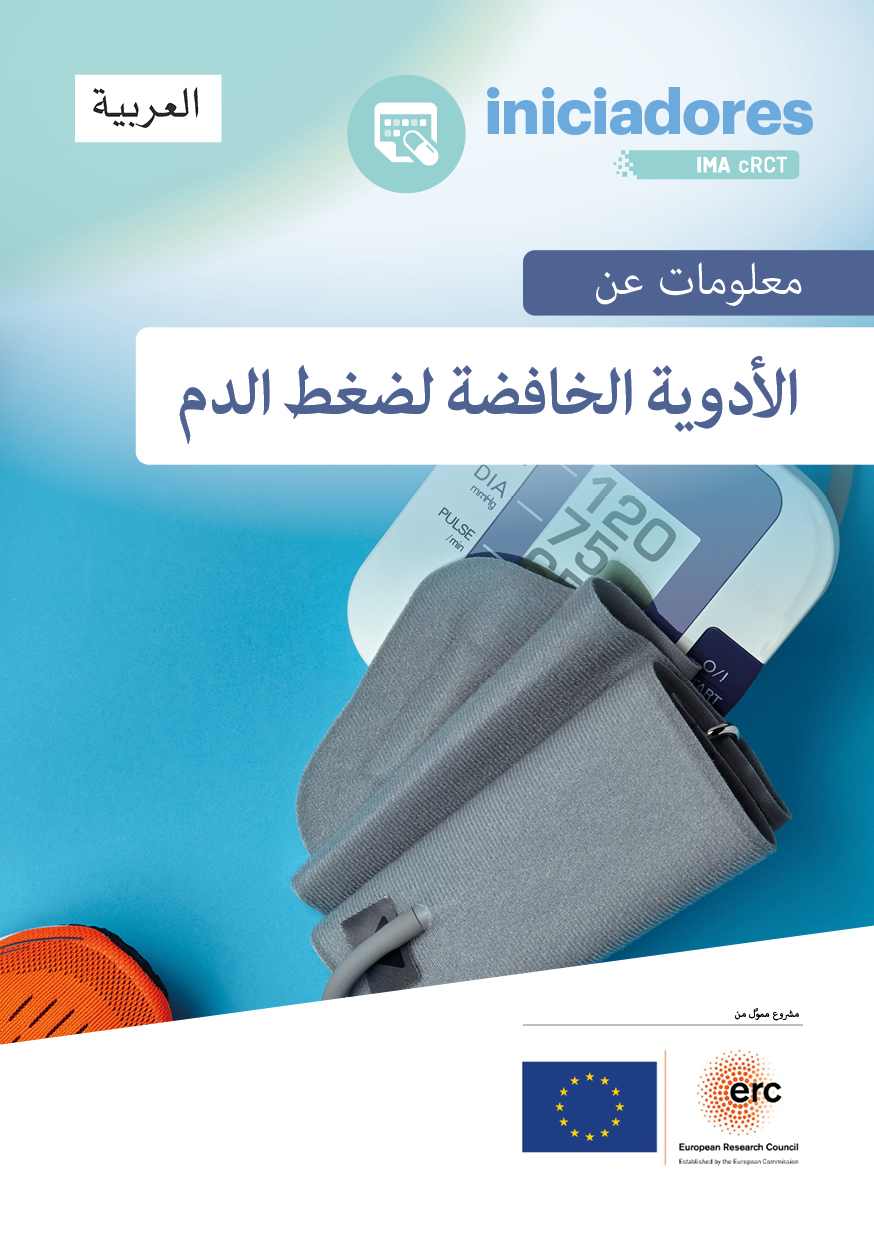
What arelipid-lowering agents?
They are drugs that have the property of reducing blood cholesterol and/or triglyceride levels and thus preventing cardiovascular diseases such as stroke or heart attack.
The purpose of controlling blood cholesterol and/or triglyceride levels is to reduce cardiovascular risk.
The different treatments
There are different lipid-lowering treatments, of which the most commonly used are:
CHARACTERISTICS
They reduce the creation of cholesterol in the liver and reduce the level of LDL cholesterol in the blood.
Simvastatin/Atorvastatin/Pravastatin
- Acts on the: Liver
- Benefits
They reduce LDL cholesterol by 20-40%
- Adverse effects
- How and when to take it
With or without food, preferably at night
Common. May affect less than 1 in 10 people
Very Common. May affect more than 1 in 10 people
CHARACTERISTICS
They reduce triglyceride levels and, as a result, increase HDL cholesterol levels in the blood.
Gemfibrozil
- Acts on the: Liver
- Benefits
Reduces Triglycerides by 20-40%
Increases HDL cholesterol by 7-15%
- Adverse effects
- How and when to take it
With food
Common. May affect less than 1 in 10 people
Very Common. May affect more than 1 in 10 people
CHARACTERISTICS
Inhibits intestinal absorption of the cholesterol we consume in our diet and thus reduces the amount of cholesterol that reaches the liver.
Ezetimibe (on its own or in combination with statins)
- Acts on the: Intestine and Liver
- Benefits
Reduces LDL cholesterol by 12-14%
- Adverse effects
- How and when to take it
With or without food
Common. May affect less than 1 in 10 people
Very Common. May affect more than 1 in 10 people
+
When combined with Statins
These are the most commonly used lipid-lowering agents, but there are other medicines that can be prescribed. If you have any questions about your treatment you can always consult your doctor, practice nurse or pharmacist.
You can also find reliable information in the Medicines Information Centre of the Spanish Agency of Medicines and Medical Devices.
Is it compatible with breastfeeding?
The e-lactancia website will tell you if your treatment is compatible with breastfeeding.
Monitoring Plan
Clinical practice guidelines recommend a blood test for monitoring purposes at least once every 18 months







What are Oral
Antidiabetic Drugs?
Oral antidiabetic drugs, also known as oral glucose-lowering drugs, are medicines that work by helping to regulate blood sugar levels.
The different treatments
There are several types of oral antidiabetic drugs and they each have different mechanisms of action. Therefore, it is necessary to know their effects and take them at the designated times.
CHARACTERISTICS
They reduce the amount of sugar absorbed by the body and help to control the amount of sugar in the blood. They are especially indicated for patients who are overweight.
Metformin
- Acts on the: Liver, Muscle
- Benefits
Reduction of blood sugar
Reduction of eye, kidney and neurological damage
Protection against vascular events
- Adverse effects
- How and when to take it
During or after meals
Common. May affect less than 1 in 10 people
Very Common. May affect more than 1 in 10 people
CHARACTERISTICS
They stimulate the secretion of insulin by action of the pancreas.
Gliclazide/Glipizide/Glimepiride
- Acts on the: Pancreas
- Benefits
Reduction of blood sugar
Reduction of eye, kidney and neurological damage
- Adverse effects
- How and when to take it
Before or during meals
Common. May affect less than 1 in 10 people.
Very Common. May affect more than 1 in 10 people
CHARACTERISTICS
Their action is similar to sulfonylureas, stimulating the secretion of insulin by action of the pancreas.
Repaglinide
- Acts on the: Pancreas
- Benefits
Reduction of blood sugar
Reduction of eye, kidney and neurological damage
- Adverse effects
- How and when to take it
Before main meals
Common. May affect less than 1 in 10 people
Very Common. May affect more than 1 in 10 people
CHARACTERISTICS
They act on the muscles by reducing insulin resistance and indirectly improving insulin secretion. They are usually used in combination with another oral antidiabetic treatment, such as Metformin.
Pioglitazone
- Acts on the: Muscle
- Benefits
Reduction of blood sugar
Reduction of eye, kidney and neurological damage
- Adverse effects
- How and when to take it
With or without food
Common. May affect less than 1 in 10 people
Very Common. May affect more than 1 in 10 people
CHARACTERISTICS
They reduce absorption of carbohydrates into the digestive system and thus reduce glucose spikes after eating.
Acarbose
- Acts on the: Intestines
- Benefits
Reduction of blood sugar
Reduction of eye, kidney and neurological damage
- Adverse effects
- How and when to take it
With the main meals
Common. May affect less than 1 in 10 people
Very Common. May affect more than 1 in 10 people
CHARACTERISTICS
They act by inhibiting the DPP-4 enzyme and as a result they cause an increase in insulin secretion in the pancreas and inhibit glucagon secretion.
Sitagliptin
- Acts on the: Stomach, intestines, liver and pancreas
- Benefits
Reduction of blood sugar
Reduction of eye, kidney and neurological damage
- Adverse effects
- How and when to take it
With or without food
Common. May affect less than 1 in 10 people
Very Common. May affect more than 1 in 10 people
CHARACTERISTICS
They promote the excretion of glucose in urine and reduce high blood sugar levels.
Empagliflozin/Canagliflozin/Dapagliflozin
- Acts on the: Kidneys
- Benefits
Reduction of blood sugar
Reduction of eye, kidney and neurological damage
Weight loss
Protection against vascular episodes
- Adverse effects
- How and when to take it
With or without food
Common. May affect less than 1 in 10 people.
Very Common. May affect more than 1 in 10 people.
CHARACTERISTICS
This medicine contains a hormone (similar to glucagon) that stimulates insulin secretion when there is a lot of glucose in the blood (hyperglycaemia), but not when there is little (hypoglycaemia). It also inhibits the secretion of glucagon in the body and slows down gastric emptying.
Semaglutide
- Acts on the: Liver, pancreas and stomach
- Benefits
Reduction of blood sugar
Weight loss
- Adverse effects
- How and when to take it
On an empty stomach anytime. You should wait 30 minutes to eat or drink.
Common. May affect less tan 1 in 10 people.
Very common. May affect more than 1 in 10 people
These are the most commonly used oral antidiabetic drugs, but there are other medicines that can be used. If you have any questions about your treatment, you can always consult your doctor, practice nurse or pharmacist.
You can also find reliable information in the Medicines Information Centre of the Spanish Agency of Medicines and Medical Devices.
What is a hypo?
A hypo, or hypoglycaemia, occurs when the blood sugar level is lower than normal. There is a risk of suffering from hypoglycaemia when using a medicinal treatment for diabetes.
If you have any of these symptoms, you may be suffering a hypo:
→ Irregular or rapid heart beat
→ Fatigue
→ Pale skin
→ Trembling
→ Anxiety
→ Sweating
→ Hunger
→ Irritability
→ Tingling or numbness of the lips, tongue or cheeks
In these cases, it is important to eat 1 or 2 pieces of fast-absorbing carbohydrates (e.g. fruit). Follow the instructions given to you by the professionals from your primary care centre and, if necessary, contact the medical services urgently.
Monitoring Plan
The clinical practice guidelines recommend an annual check-up with the primary care nurse, and blood tests every 6 months.






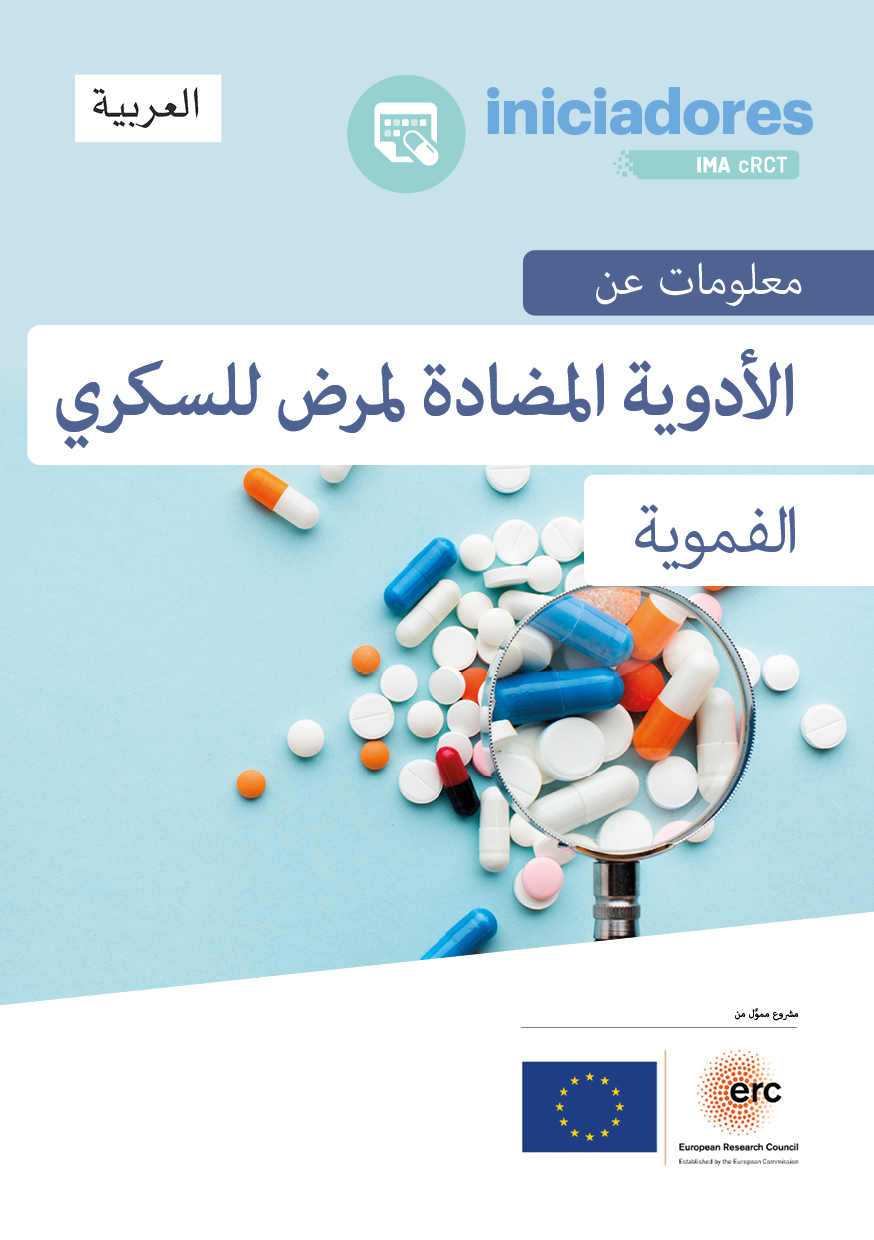
What are Injectable Antidiabetic Drugs?
Injectable antidiabetic drugs are medicines administered by subcutaneous route (underneath the skin) and their function is to help regulate the blood sugar level.
Patients with type 1 diabetes mellitus do not generate insulin in the pancreas and have high blood glucose levels. Therefore, they need to give themselves insulin injections to be able to live. In the case of patients with type 2 diabetes mellitus, injectable antidiabetic drugs are used when diabetes cannot be controlled with diet and oral antidiabetic drugs.
The different treatments
The treatment with injectable antidiabetic drugs may be with human insulin and short-acting insulin analogues (they are distinguished by the time they take to act and the duration of the effect) or by GLP-1 agonists.
CHARACTERISTICS
Insulin is a hormone that the body produces in the pancreas. This hormone helps the body to use the glucose that we ingest with food. When the pancreas does not produce insulin, this has to be administered.
Insulin aspart/Insulin lispro
- Benefits
Reduces blood sugar
- Adverse effects
- Duration
• Insulin aspart: 3-5 hrs
• Insulin lispro: 2-5 hrs
Common. May affect less than 1 in 10 people
Very Common. May affect more than 1 in 10 people
CHARACTERISTICS
Insulin is a hormone that the body produces in the pancreas. This hormone helps the body to use the glucose that we ingest with food. When the pancreas does not produce insulin, this has to be administered.
Regular insulin
- Benefits
Reduces blood sugar
- Adverse effects
- Duration
6-8 hrs
Common. May affect less than 1 in 10 people
Very Common. May affect more than 1 in 10 people
CHARACTERISTICS
Insulin is a hormone that the body produces in the pancreas. This hormone helps the body to use the glucose that we ingest with food. When the pancreas does not produce insulin, this has to be administered.
NPH insulin/Insulin detemir
- Benefits
Reduces blood sugar
- Adverse effects
- Duration
16-24 hrs
Common. May affect less than 1 in 10 people
Very Common. May affect more than 1 in 10 people
CHARACTERISTICS
Insulin is a hormone that the body produces in the pancreas. This hormone helps the body to use the glucose that we ingest with food. When the pancreas does not produce insulin, this has to be administered.
Insulin glargine
- Benefits
Reduces blood sugar
- Adverse effects
- Duration
18-24 hrs
Common. May affect less than 1 in 10 people
Very Common. May affect more than 1 in 10 people
CHARACTERISTICS
Insulin is a hormone that the body produces in the pancreas. This hormone helps the body to use the glucose that we ingest with food. When the pancreas does not produce insulin, this has to be administered.
Regular + NPH Insulin/Insulin Lispro + NPL/Insulin Aspart + Aspart-Protamine
- Benefits
Reduces blood sugar
- Adverse effects
- Duration
24 hrs
Common. May affect less than 1 in 10 people
Very Common. May affect more than 1 in 10 people
CHARACTERISTICS
This medicine contains a hormone (similar to glucagon) that stimulates insulin secretion when there is a lot of glucose in the blood (hyperglycaemia), but not when there is little (hypoglycaemia). It also inhibits the secretion of glucagon in the body and slows down gastric emptying.
Dulaglutide/Exenatide/Liraglutide
- Benefits
Reduction of blood sugar
Weight loss
Protects against cardiovascular episodes
- Adverse effects
- Duration
• Dulaglutide: 7 days
• Exenatide: 12 hrs
• Liraglutide: 24 hrs
Common. May affect less than 1 in 10 people
Very Common. May affect more than 1 in 10 people
These are the most commonly used injectable antidiabetic drugs, but there are other medicines that can be used. If you have any questions about your treatment, you can always consult your doctor, practice nurse or pharmacist.
You can also find reliable information in the Medicines Information Centre of the Spanish Agency of Medicines and Medical Devices.
Is it compatible with breastfeeding?
Consult the compatibility of your treatment with breastfeeding
Where are Injectable Antidiabetic Drugs administered?
Insulin and GLP-1 agonists are injected into the subcutaneous tissue. They can be injected into different areas and it is recommended to keep changing the area to avoid hypertrophy or hardening of the area.

The puncture sites are:
1 > Arm
2 > Thigh
3 > Abdomen
4 > Buttocks
Monitoring Plan
The clinical practice guidelines recommend an annual check-up with the practice nurse, and a blood test every 6 months.







